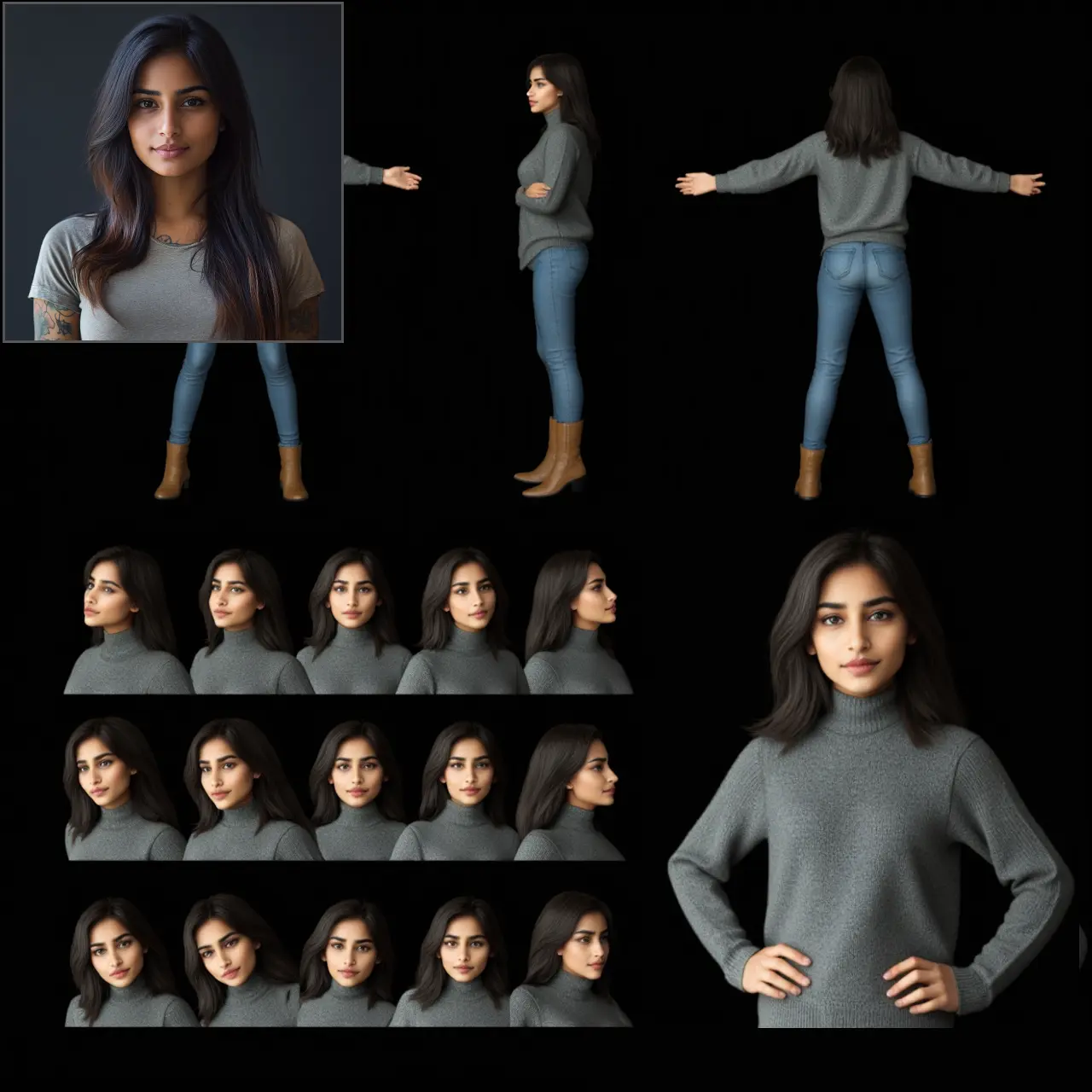ComfyUI Node: Pose Node
PoseNode
CategoryAlekPet Nodes/image
AlekPet (Account age: 2984days) Extension
AlekPet/ComfyUI_Custom_Nodes_AlekPet Latest Updated
2025-03-28 Github Stars
1.13K
How to Install AlekPet/ComfyUI_Custom_Nodes_AlekPet
Install this extension via the ComfyUI Manager by searching for AlekPet/ComfyUI_Custom_Nodes_AlekPet- 1. Click the Manager button in the main menu
- 2. Select Custom Nodes Manager button
- 3. Enter AlekPet/ComfyUI_Custom_Nodes_AlekPet in the search bar
Visit ComfyUI Online for ready-to-use ComfyUI environment
- Free trial available
- 16GB VRAM to 80GB VRAM GPU machines
- 400+ preloaded models/nodes
- Freedom to upload custom models/nodes
- 200+ ready-to-run workflows
- 100% private workspace with up to 200GB storage
- Dedicated Support
Pose Node Description
Image processing for pose estimation using PIL and PyTorch, automating RGB conversion and tensor transformation.
Pose Node:
The PoseNode is designed to process images and convert them into a format suitable for pose estimation tasks. This node is particularly useful for AI artists who need to analyze and manipulate human poses within images. By leveraging the power of the PIL (Python Imaging Library) and PyTorch, the PoseNode reads an image, converts it to an RGB format, normalizes the pixel values, and transforms it into a tensor. This transformation is essential for further processing in machine learning models that require tensor inputs. The PoseNode simplifies the workflow by automating these steps, allowing you to focus on the creative aspects of your projects.
Pose Node Input Parameters:
image
The image parameter specifies the name of the image file to be processed. This image should be located in the temporary directory specified by the system. The function of this parameter is to provide the node with the necessary input data for processing. The impact of this parameter on the node's execution is significant, as it determines the source image that will be converted into a tensor. The available options for this parameter are dynamically generated based on the contents of the temporary directory, ensuring that you can easily select from the available images.
Pose Node Output Parameters:
IMAGE
The IMAGE output parameter represents the processed image in the form of a tensor. This tensor is normalized and ready for use in pose estimation models. The importance of this output lies in its compatibility with machine learning frameworks like PyTorch, which require tensor inputs for further processing. The output tensor retains the spatial dimensions of the original image but is scaled to have pixel values between 0 and 1, making it suitable for various downstream tasks.
Pose Node Usage Tips:
- Ensure that the image file you want to process is placed in the temporary directory specified by the system. This will make it available for selection in the
imageparameter. - Use high-quality images with clear and distinct human poses to achieve better results in pose estimation tasks.
- If you encounter issues with image loading, verify that the image file format is supported by the PIL library.
Pose Node Common Errors and Solutions:
FileNotFoundError: [Errno 2] No such file or directory: '<image_path>'
- Explanation: This error occurs when the specified image file is not found in the temporary directory.
- Solution: Ensure that the image file is correctly placed in the temporary directory and that the file name is correctly specified in the
imageparameter.
OSError: cannot identify image file '<image_path>'
- Explanation: This error occurs when the PIL library is unable to identify or open the specified image file.
- Solution: Verify that the image file is not corrupted and is in a supported format (e.g., JPEG, PNG). If the issue persists, try opening the image with an image viewer to ensure it is valid.
ValueError: too many dimensions 'str' (expected 2)
- Explanation: This error occurs when the image tensor has an unexpected number of dimensions, which can happen if the image is not properly converted to an RGB format.
- Solution: Ensure that the image file is in a format that can be converted to RGB. If the image has an alpha channel, it may need to be preprocessed to remove the alpha channel before using the PoseNode.
Pose Node Related Nodes
RunComfy is the premier ComfyUI platform, offering ComfyUI online environment and services, along with ComfyUI workflows featuring stunning visuals. RunComfy also provides AI Models, enabling artists to harness the latest AI tools to create incredible art.


